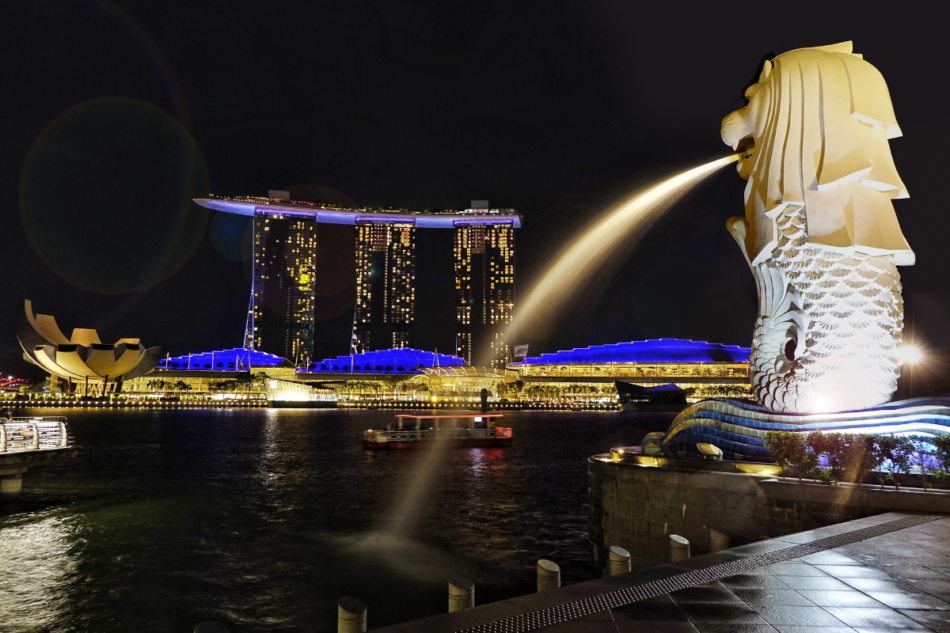Sunny Singapore: Modernity in the Lion City, where tradition meets modernity in a fusion of wonder, safe travel, iconic landmarks, and culinary delights.
Nestled in Southeast Asia, Singapore is a dazzling island city-state known for its dynamic fusion of cultures, futuristic architecture, and culinary wonders.
Brace yourself for a journey through a city that seamlessly blends tradition with modernity, where skyscrapers meet lush greenery, and vibrant neighborhoods beckon you into their diverse recipe of experiences. Get ready to explore the Lion City like never before!
- Founding Story of Singapore
- 5 Key Historical Landmarks
- Blend of Tradition and Modernity
- Two Other Hidden Gems of Singapore
- Safety in the Lion City
- What NOT to Do in Singapore
- Culinary Delights
- Singapore Grand Prix: The F1 Spectacle
- Some Interesting Facts About Singapore
- Conclusion
- Frequently Asked Questions
Founding Story of Singapore
Singapore was originally known as Temasek and later as Singapura before the arrival of the British. The name Singapore is derived from the Malay words “Singa” (lion) and “Pura” (city), which together mean “Lion City.”
Singapore’s journey began in the early 19th century, with its official founding marked on February 6, 1819. The pivotal figure behind this transformation was Sir Stamford Raffles, a British statesman and lieutenant governor of the British East India Company.
Sir Stamford Raffles arrived in the region with the intent of establishing a British trading post in Southeast Asia. Recognizing the strategic significance of the island at the crossroads of major shipping routes, he saw the potential to create a flourishing hub for global commerce.
The first significant construction in Singapore was Fort Fullerton, named after Raffles’s predecessor. Completed in 1829, this fort served as a defensive structure and a symbol of British presence in the region.
| An interesting read Seven Hundred Years: A History of Singapore. I enjoy reading about a country I am visiting before departing. |
However, the early settlers faced numerous challenges as they laid the groundwork for the burgeoning city-state. Some of these challenges included:
- Malaria and Disease: The tropical climate of Singapore posed health hazards for the early settlers, leading to outbreaks of diseases like malaria. This significantly impacted the population and slowed the initial development.
- Limited Resources: Singapore had limited natural resources, and the early colonists had to rely heavily on trade. The lack of freshwater sources added to the difficulties faced by the settlers.
- Struggles with Infrastructure: Establishing necessary infrastructure, such as roads and buildings, was a formidable task. The challenging terrain and dense vegetation made construction efforts demanding.
- Cultural Diversity: Singapore was a melting pot of diverse cultures and ethnicities, including Malays, Chinese, Indians, and others. Managing this cultural diversity posed social and administrative challenges for the early colonial authorities.
Despite these obstacles, the resilience and vision of the early settlers, led by Sir Stamford Raffles, laid the foundation for Singapore’s rise as a global economic powerhouse and a harmonious multicultural society.
5 Key Historical Landmarks
1. Raffles Hotel
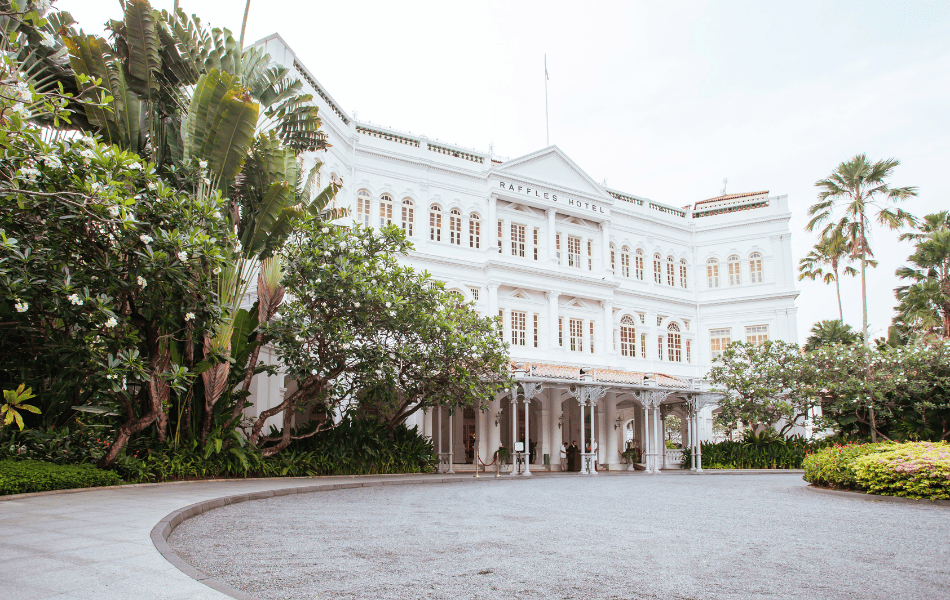
A colonial gem dating back to 1887, Raffles Hotel is an iconic symbol of Singapore’s history. Its luxurious architecture and storied past make it a must-visit landmark, offering a glimpse into the city’s colonial-era elegance.
2. Thian Hock Keng Temple
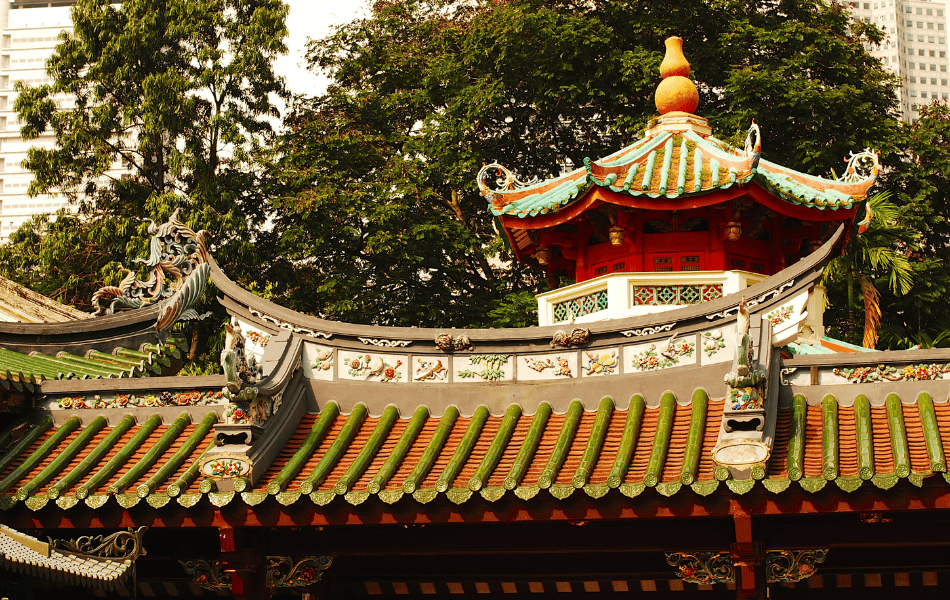
Founded in 1821, Thian Hock Keng is one of Singapore’s oldest and most important Hokkien temples. This architectural marvel stands as a testament to the early Chinese immigrants’ contributions and their cultural influence on the island.
3. Merlion Park
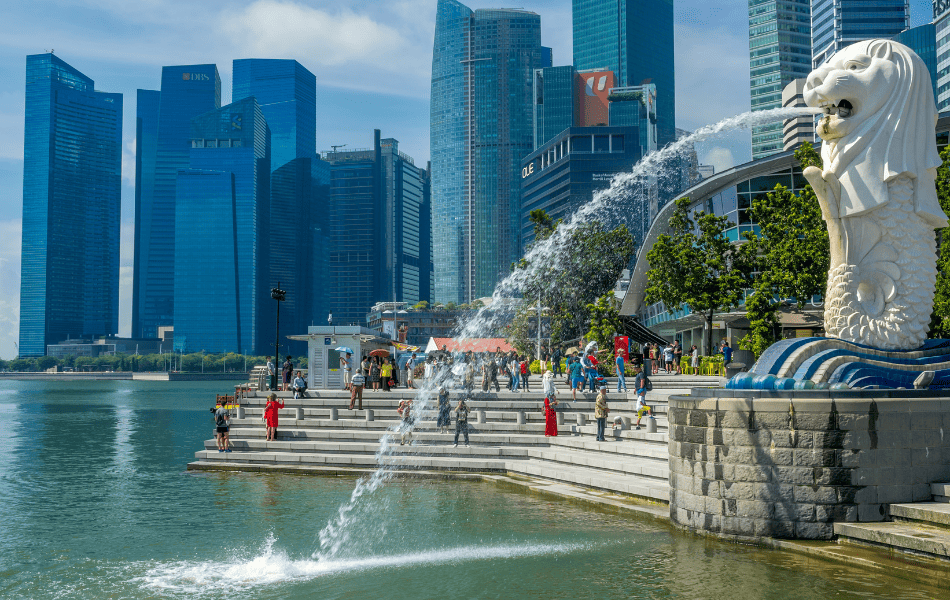
Home to the mythical creature that has become Singapore’s mascot, Merlion Park boasts a stunning waterfront view. The Merlion statue, with the head of a lion and the body of a fish, symbolizes the city’s historic ties to both the Malay legend of Sang Nila Utama and its maritime roots.
| I find the Merlion statue fascinating. In my manufacturing concern, we manufactured thousands of Merlion keyrings for a Singaporean client. |
The Merlion statue in Singapore was designed and sculpted by the local artist Lim Nang Seng. It was unveiled on 15 September 1972 at the mouth of the Singapore River, near the Fullerton Waterboat House. The Merlion, with the head of a lion and the body of a fish, has since become an iconic symbol of Singapore and a popular tourist attraction. The statue underwent a relocation in 2002 to its current home in Merlion Park, providing a picturesque backdrop.
4. Singapore Botanic Gardens
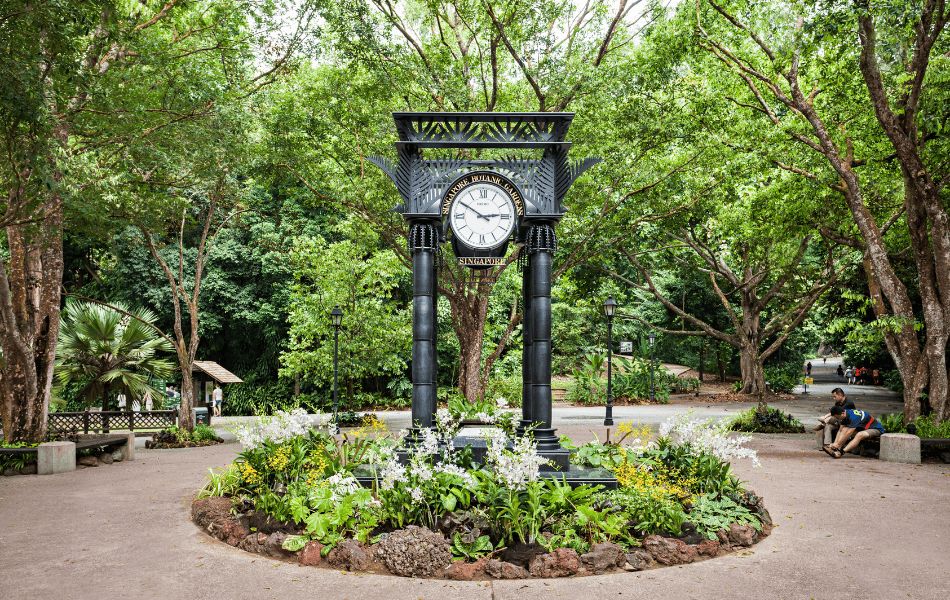
Established in 1859, the Singapore Botanic Gardens is a lush oasis in the heart of the city. The gardens showcase a blend of historical charm and natural beauty, with attractions like the National Orchid Garden and Swan Lake, making it a UNESCO World Heritage Site.
5. National Museum of Singapore
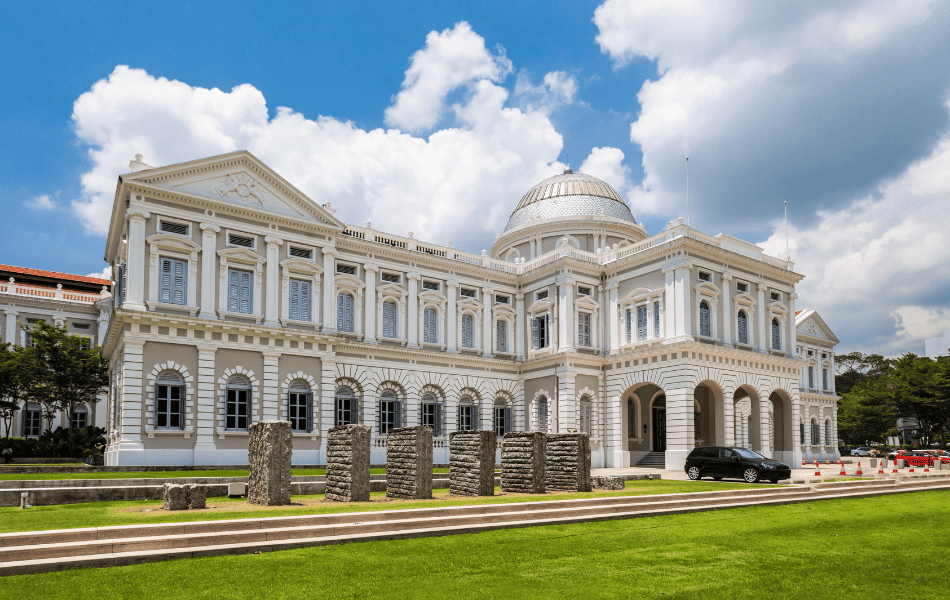
As the oldest museum in Singapore, the National Museum provides a comprehensive journey through the nation’s history and cultural heritage. Its elegant architecture and engaging exhibits make it a vital destination for those seeking a deeper understanding of Singapore’s past.
Blend of Tradition and Modernity
Singapore’s allure lies in its seamless integration of tradition and modernity, creating a dynamic cityscape that captivates visitors. Here are three compelling examples of this captivating blend.
Chinatown’s Cultural Enclave
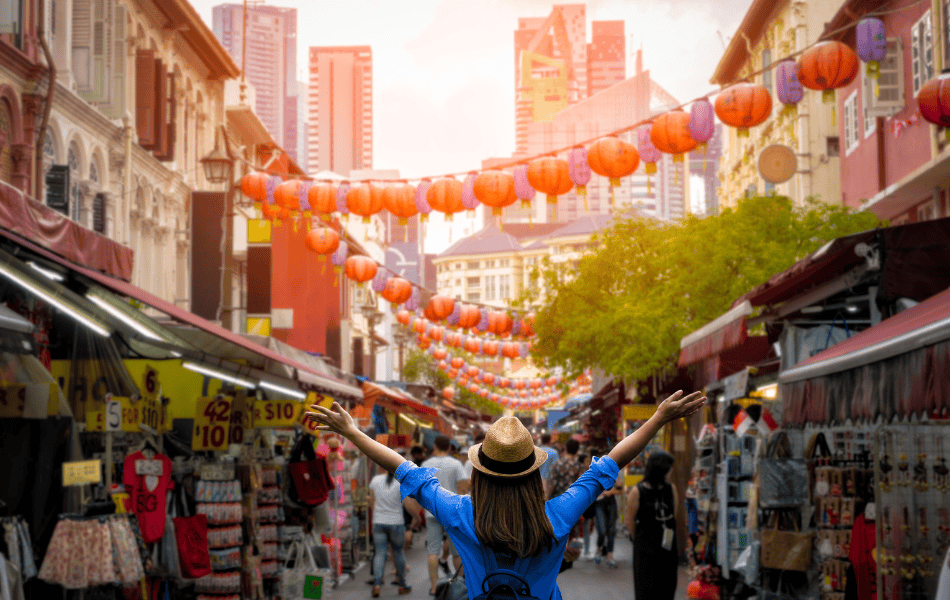
Step into the heart of Chinatown, where ancient traditions coexist harmoniously with contemporary developments. Wander through vibrant streets adorned with traditional shophouses, where the scent of incense wafts from historic temples. Amidst the traditional market stalls, you’ll also find trendy boutiques, modern art galleries, and hip cafes, showcasing the fusion of Singapore’s rich heritage with a modern, urban vibe.
Little India’s Kaleidoscope of Colors
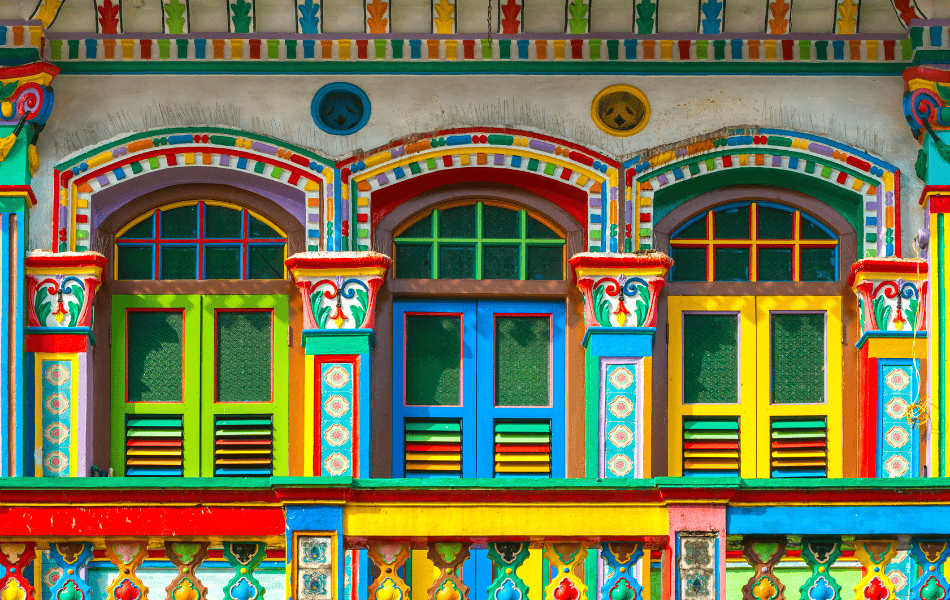
Little India is a captivating neighborhood where the spirit of India comes alive against a backdrop of modern city living. Ornate temples, such as Sri Veeramakaliamman Temple, stand amidst the hustle and bustle of colorful streets. Traditional Indian music and the aroma of spices fill the air, while modern shopping malls and stylish eateries add a contemporary touch. The blend of old and new in Little India paints a vibrant picture of cultural dynamism.
Gardens by the Bay’s Futuristic Oasis
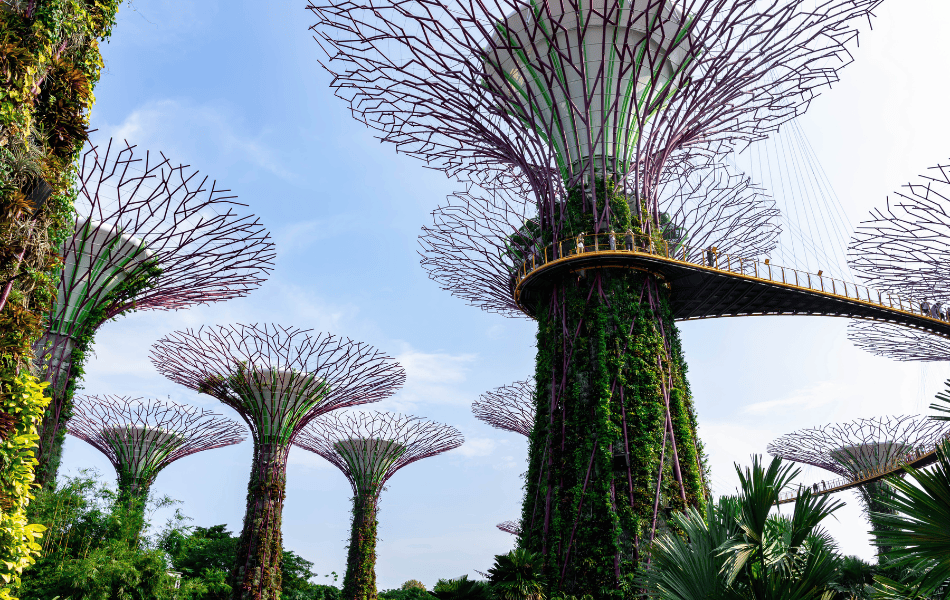
Gardens by the Bay represents a breathtaking fusion of cutting-edge architecture with lush greenery. The iconic Supertree Grove, a collection of towering tree-like structures, combines sustainable technology with a touch of whimsy. As you wander through the Flower Dome and Cloud Forest conservatories, you’ll witness the marriage of traditional botanical wonders with state-of-the-art ecological innovation. Gardens by the Bay showcases Singapore’s commitment to embracing the future while staying rooted in the beauty of nature.
These examples illustrate Singapore’s ability to weave together its rich cultural heritage with the modern advancements that define it as a global metropolis. The city’s landscape becomes a living canvas, where tradition and modernity dance in harmony, inviting visitors to experience a truly unique and dynamic destination.
Two Other Hidden Gems of Singapore
Haji Lane: The Quirky Side of Singapore
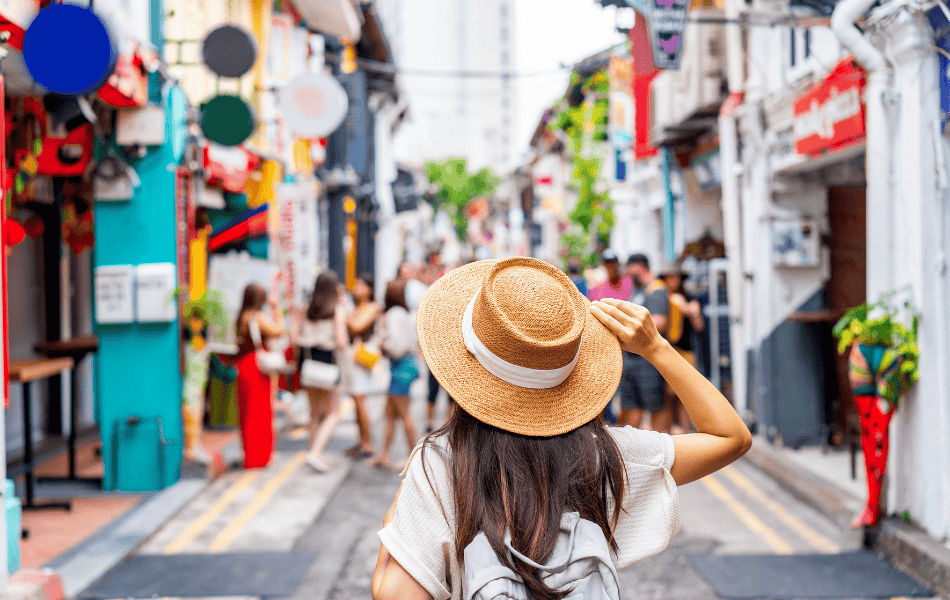
Haji Lane, nestled in Kampong Glam, unveils Singapore’s whimsical charm. A narrow alley adorned with vibrant street art, it stands as a haven for the city’s free spirits. Lined with eclectic boutiques, indie galleries, and unique cafes, the lane showcases an offbeat blend of creativity and individuality. From vintage treasures to unconventional art pieces, Haji Lane is a bohemian retreat where every corner exudes a distinct personality. The street comes alive with a diverse crowd, making it a vibrant destination for those seeking an alternative slice of Singapore’s cultural fabric.
Sentosa Island: Sun, Sand, and Adventure
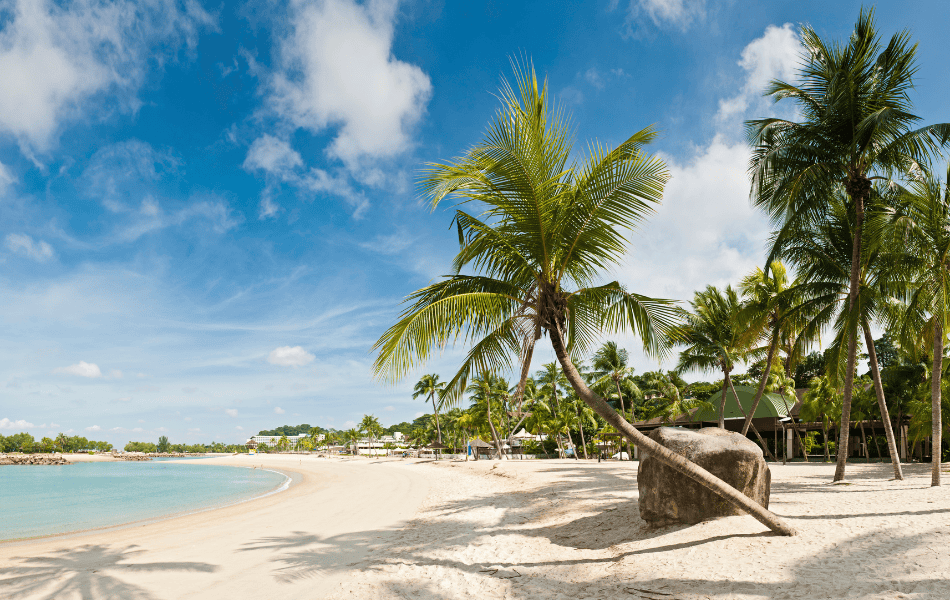
Escape to a world of sun, sand, and unparalleled adventure on the tropical paradise of Sentosa Island, a haven located just off the southern coast of Singapore. This idyllic destination offers a diverse range of experiences, making it a playground for beach lovers, thrill-seekers, and families alike.
1. Sun-Kissed Beaches
- Sentosa boasts pristine sandy shores that invite visitors to bask in the warmth of the tropical sun. Siloso Beach, Palawan Beach, and Tanjong Beach each offer a unique atmosphere, from the lively beach clubs of Siloso to the family-friendly vibes of Palawan. Whether you’re seeking relaxation or water sports excitement, Sentosa’s beaches provide the perfect backdrop for a day of seaside bliss. These beaches are the epitome of the mind’s imagination of what beaches should be. Perfect for those who chase beaches all over the world.
2. Adventure at Every Turn
- For the adrenaline junkies, Sentosa is a dream come true. The island is home to Universal Studios Singapore, a world-class theme park where blockbuster movies come to life through thrilling rides and attractions. The Adventure Cove Waterpark promises a wet and wild experience, featuring water slides, wave pools, and encounters with marine life. Meanwhile, the Mega Adventure Park lets you soar through the air on a zip line, taking in panoramic views of the island and the South China Sea.
3. Nature and Wildlife Encounters
- Beyond the excitement, Sentosa offers a retreat into nature at places like the S.E.A. Aquarium and Butterfly Park & Insect Kingdom. Marvel at the diverse marine life in the massive aquarium or wander through lush greenery where vibrant butterflies dance among tropical flowers. The island’s commitment to conservation and eco-friendly practices ensures that you can enjoy nature’s wonders responsibly.
Sentosa Island is a microcosm of leisure and entertainment, showcasing the perfect blend of natural beauty and exhilarating activities. Whether you’re seeking relaxation on the beach, embarking on thrilling adventures, or immersing yourself in the wonders of nature, Sentosa invites you to experience a tropical paradise just moments away from the bustling heart of Singapore.
Safety in the Lion City

Singapore stands as a beacon of safety in the heart of Southeast Asia, consistently ranking among the world’s safest cities. With low crime rates and stringent law enforcement, travelers can explore the Lion City with a sense of security. Public spaces are remarkably safe, even during late hours, making it a city where both locals and visitors feel at ease to roam freely. The meticulous urban planning and robust security measures contribute to Singapore’s reputation as a haven for travelers seeking a worry-free experience.
| For solo female travelers, Singapore is a perfect country to venture to. |
While enjoying the safety of Singapore, travelers should still exercise general caution and adhere to local regulations. Petty crimes like pickpocketing are rare but not unheard of, especially in crowded areas and tourist hotspots. It’s advisable to keep your belongings secure and be mindful of your surroundings. Additionally, the city’s strict laws contribute to a well-maintained environment, ensuring public spaces are clean and orderly. The efficient public transportation system adds to the overall sense of security, providing a reliable and safe means of getting around.
To ensure a trouble-free visit, travelers should familiarize themselves with local customs and laws. Singapore has strict regulations regarding activities like littering, jaywalking, and chewing gum. Familiarizing oneself with these rules helps maintain a harmonious experience and shows respect for the local culture. The proactive approach to safety and the cleanliness of the Lion City contribute to an environment where visitors can fully immerse themselves in the sights and sounds, knowing that their exploration is safeguarded by Singapore’s commitment to order and security.
What NOT to Do in Singapore
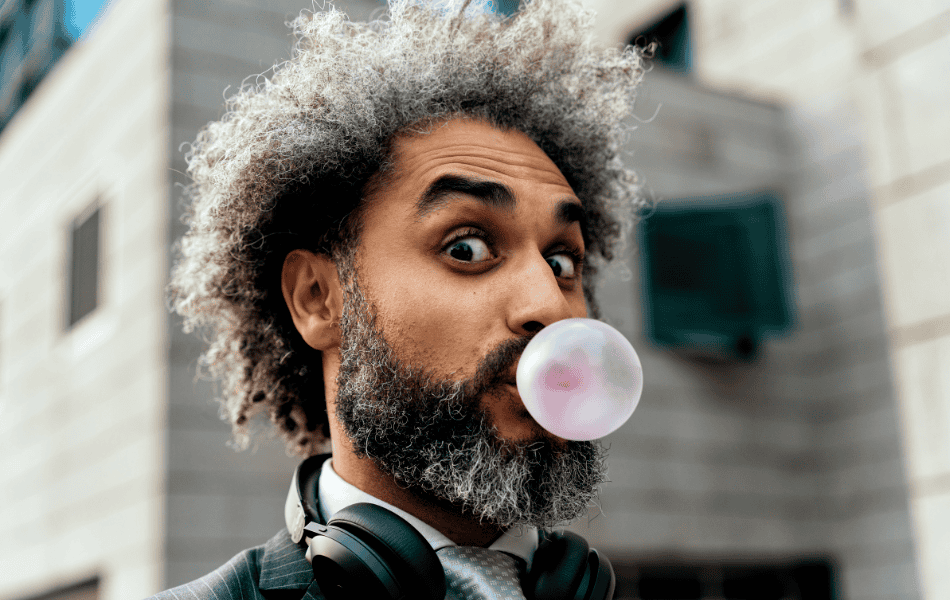
A. Strict Laws and Regulations
Singapore is renowned for its strict adherence to laws and regulations. Visitors should be aware of and respect local rules, including strict anti-littering laws, jaywalking restrictions, and the ban on chewing gum in public transportation. Understanding and adhering to these regulations ensures a smooth and trouble-free experience in the Lion City.
B. Cultural Sensitivity: Customs and Traditions
Singapore’s cultural diversity is a vibrant activity, and respecting local customs is crucial. When visiting religious sites or attending cultural events, modest attire is often required. Shoes should be removed before entering someone’s home or certain traditional spaces. Understanding and appreciating the various customs and traditions contribute to a positive and respectful experience in Singapore.
C. Prohibited Activities and Their Consequences
Engaging in prohibited activities can have severe consequences in Singapore. The possession and trafficking of drugs, including even small amounts, carry heavy penalties, including the possibility of the death penalty. Vandalism, including graffiti, is also strictly prohibited and can result in harsh penalties, including fines and imprisonment. Visitors need to be aware of these restrictions and conduct themselves with utmost care and respect for the local laws to ensure a safe and enjoyable stay in Singapore.
Culinary Delights
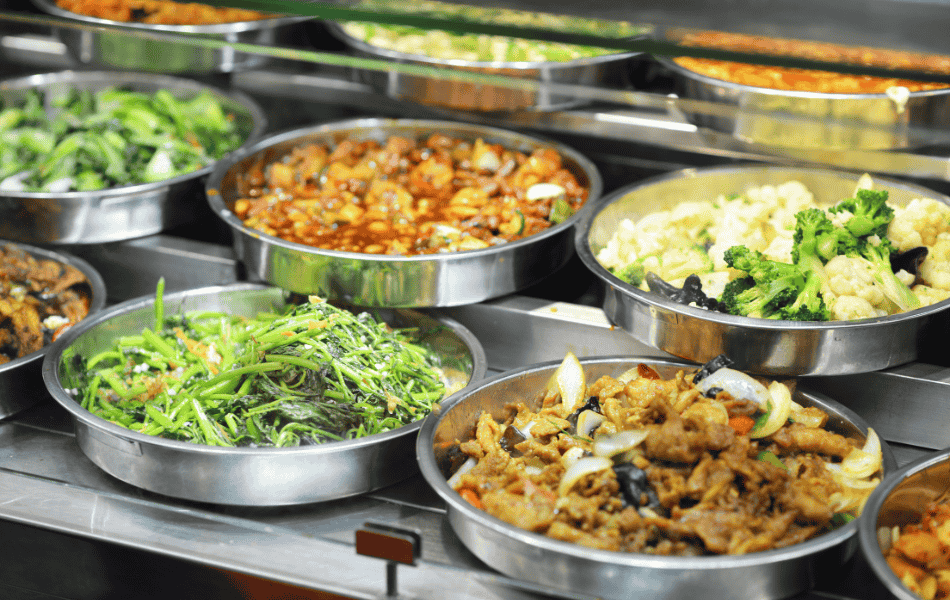
Hawker Centers: A Gastronomic Journey
You must visit the heart of Singapore’s culinary scene at Hawker Centers, bustling hubs of local flavors. From aromatic laksa to flavorful Hainanese chicken rice, these open-air food courts offer an affordable and authentic gastronomic journey. Join locals in savoring diverse dishes under one roof, celebrating the rich tapestry of Singapore’s food culture.
Signature Singaporean Dishes
Indulge in iconic Singaporean dishes that define the city’s gastronomy. Feast on chili crab, a mouthwatering seafood delight, or savor the savory-sweet perfection of Hainanese chicken rice. Each dish is a culinary masterpiece, reflecting the nation’s diverse cultural influences.
Unique Dining Experiences
Elevate your dining adventure with unique experiences. Dine amidst treetops at a Supertree Grove restaurant, cruise along the Singapore River on a floating dining platform, or explore themed cafes offering innovative twists on traditional favorites. Singapore’s culinary landscape promises not just delectable dishes but a feast for all the senses, blending innovation with tradition.
Singapore Grand Prix: The F1 Spectacle
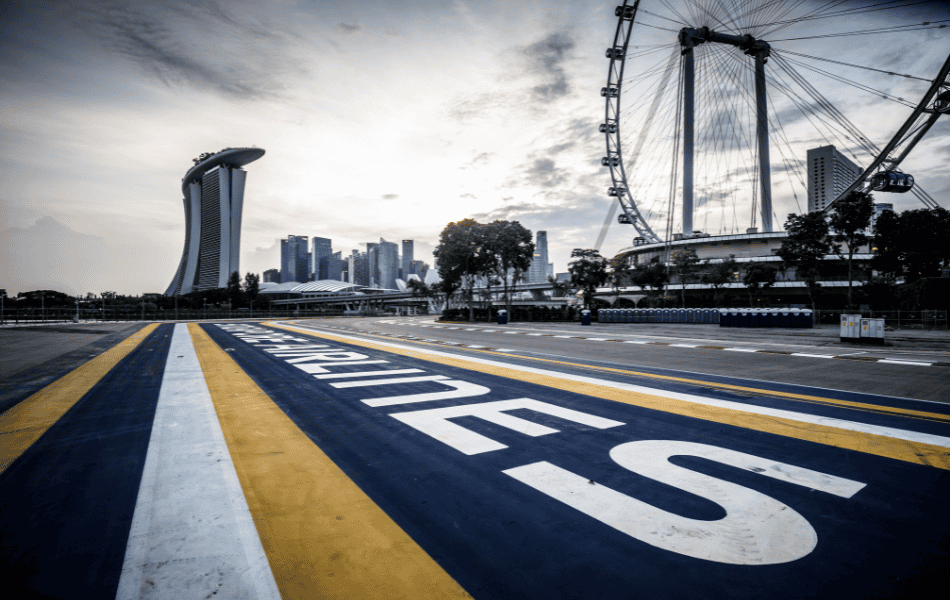
The Singapore Grand Prix is a dazzling display of speed, precision, and urban glamour, cementing its status as a jewel in the Formula 1 calendar. Set against the glittering skyline, the Marina Bay Street Circuit transforms Singapore into a futuristic racetrack, with Formula 1 cars navigating tight turns under the city’s radiant lights.
As night falls, the city comes alive with the roar of engines and the glow of neon. The Singapore Grand Prix is not merely a race; it’s a sensory feast where the intensity of competition meets the sophistication of a cosmopolitan backdrop. Spectators witness the world’s top drivers navigating the challenging circuit, showcasing their skill under high-stakes conditions.
Beyond the racetrack, the event transforms the city into a hub of excitement. Concerts featuring international artists, street parties, and exclusive events create an electric atmosphere, making the Singapore Grand Prix a celebration of speed, entertainment, and unparalleled glamour. This annual spectacle not only captivates motorsport enthusiasts but also invites everyone to revel in the thrill of Formula 1 against the dazzling urban backdrop of the Lion City.
Some Interesting Facts About Singapore
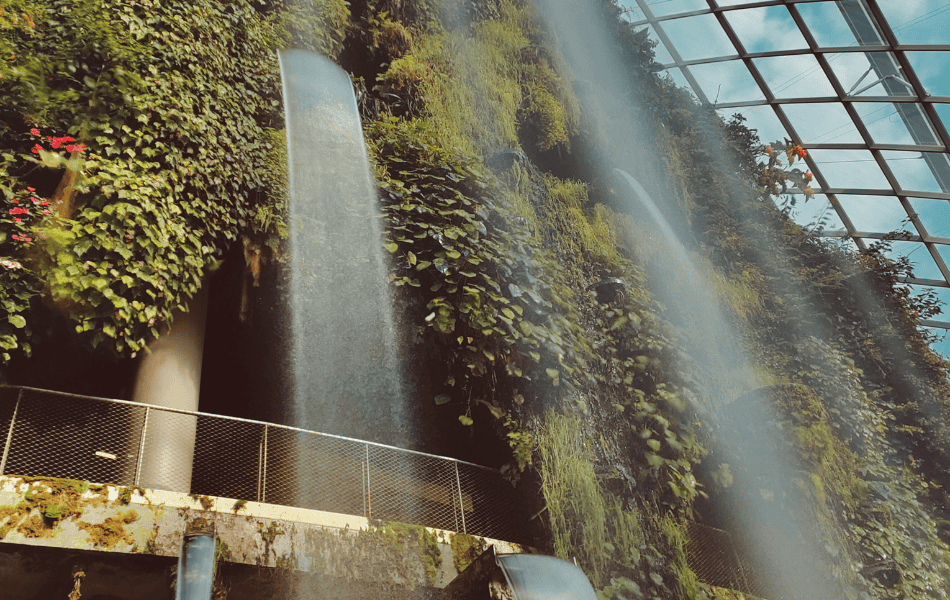
- The Land of Vertical Gardens:
- Singapore is home to the world’s largest vertical garden, the Green Wall at One Central Park. Stretching 960 feet, this lush and eco-friendly masterpiece spans the exterior of two residential towers, showcasing the city’s commitment to sustainable urban living.
- Mystery of the Singapore Stone:
- The Singapore Stone, a massive sandstone slab discovered in 1819, once stood at the mouth of the Singapore River. Covered in inscriptions, the stone mysteriously disappeared in 1843. Its whereabouts remain unknown, adding an element of historical intrigue to Singapore’s past.
- HDB Mailboxes:
- In Singapore, Housing and Development Board (HDB) public housing estates have distinctively colored mailboxes to represent different neighborhoods. This unique system helps residents easily identify and locate their mailboxes in the vast housing complexes.
- World’s First Night Safari:
- Singapore’s Night Safari is the world’s first nocturnal zoo, allowing visitors to experience the thrill of observing wildlife in a naturalistic setting after sunset. The park is home to over 2,500 animals representing over 130 species, providing a unique and immersive nighttime safari experience.
- Durian, the King of Fruits:
- Singaporeans have a love-hate relationship with durian, known as the “King of Fruits.” This pungent and divisive fruit is banned in many hotels and public transportation due to its strong odor, but for durian enthusiasts, it’s a delicacy to be savored.
| Singapore’s Man-Made Waterfall: Within the Cloud Forest at Gardens by the Bay, visitors encounter the world’s tallest indoor waterfall. Standing at 35 meters (115 feet), the waterfall creates a misty, cool environment simulating a tropical montane forest, providing a unique and refreshing experience in the heart of the city. If you love chasing waterfalls as I do, you will love this fall! |
Conclusion
Singapore reveals a captivating fusion of tradition and modernity, a city where history seamlessly integrates with innovation, and cultural diversity paints a vibrant picture. From the quirky allure of Haji Lane to the high-speed glamour of the Grand Prix, each facet contributes to Singapore’s unique and unforgettable charm.
| If you have enjoyed this article, please LIKE and SUBSCRIBE, so you can receive further amazing travel destinations. |
Frequently Asked Questions
Answer: Singapore experiences a tropical climate, with warm temperatures and high humidity year-round.
Are there strict dress codes at religious sites in Singapore?
Answer: Yes, modest attire is often required when visiting religious sites in Singapore.
What are the must-try dishes in Singapore?
Answer: Signature dishes include chili crab, Hainanese chicken rice, and laksa.
How do I get tickets for the Singapore Grand Prix?
Answer: Tickets for the Singapore Grand Prix can be purchased online through the official Formula 1 website or authorized ticket vendors.
Are there any cultural events during the Chinese New Year in Singapore?
Answer: Yes, Singapore hosts vibrant cultural events and festivities during Chinese New Year, including parades and traditional performances.
Can I bring chewing gum into Singapore now?
Answer: Yes, the ban on chewing gum was lifted in 2004, but it’s still advised to use it responsibly.
Recent Posts
Discover insider tips to find cheap flights from the UK, save on easyJet, Ryanair & BA, and score the best weekend and last-minute deals. Why You’re Paying Too Much for Flights Most UK...
Discover the sounds of travel, from laughing kookaburras to market chatter, church bells to ocean waves - a journey heard as much as seen. It always starts with a sound. The other day, walking...

